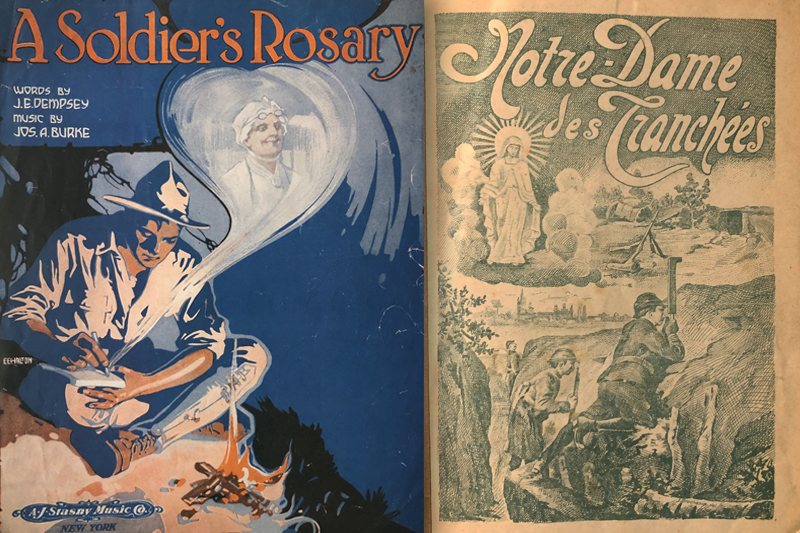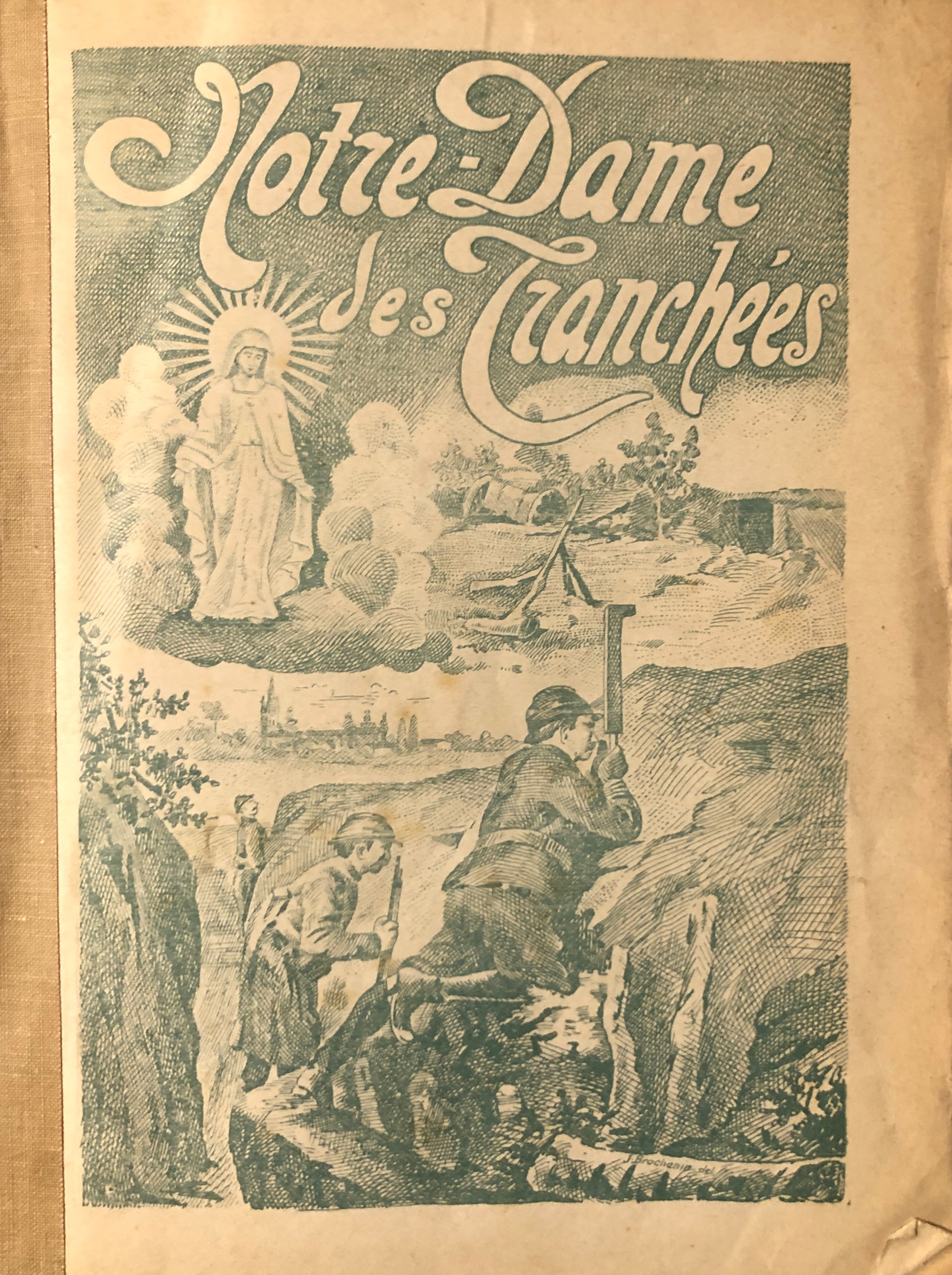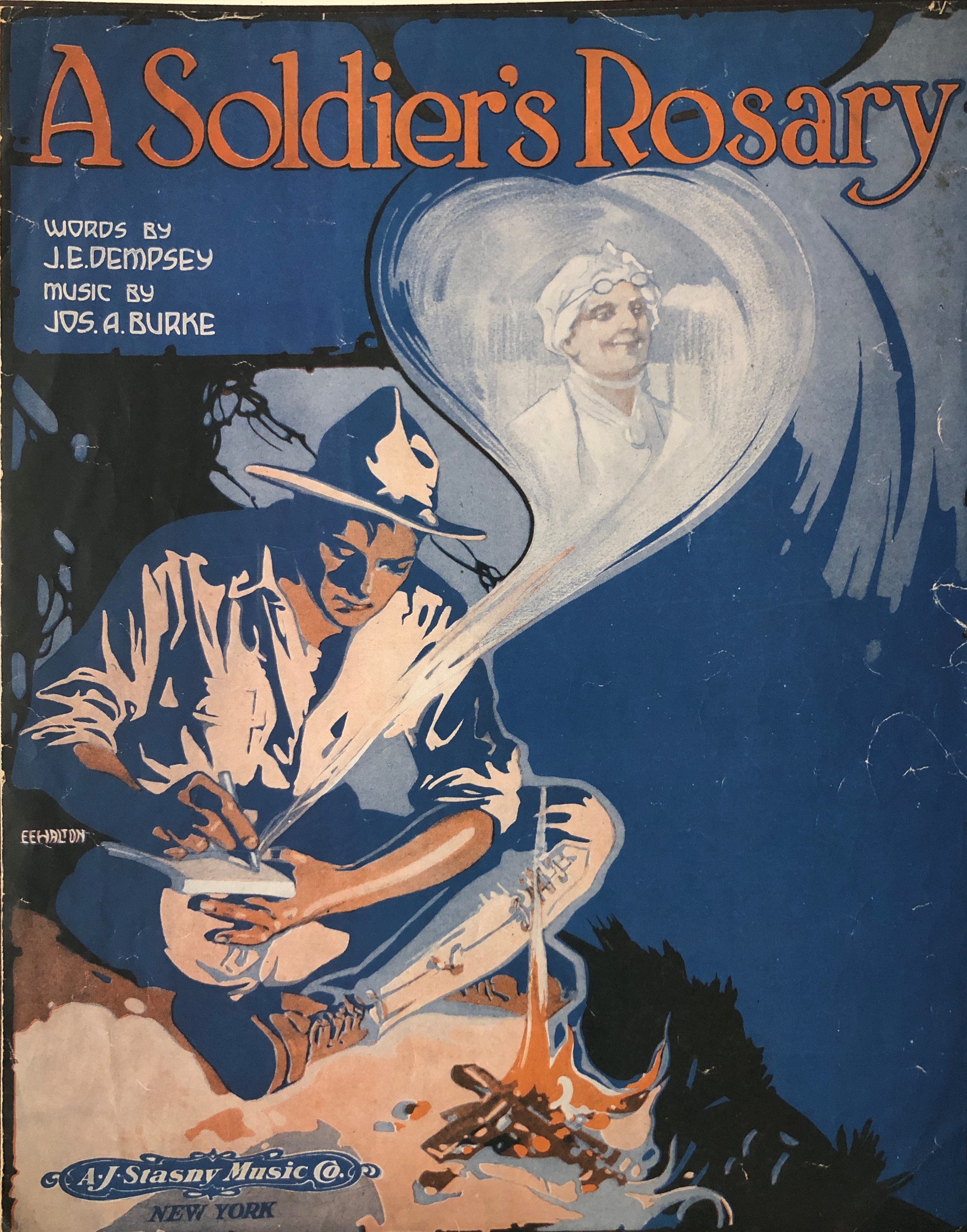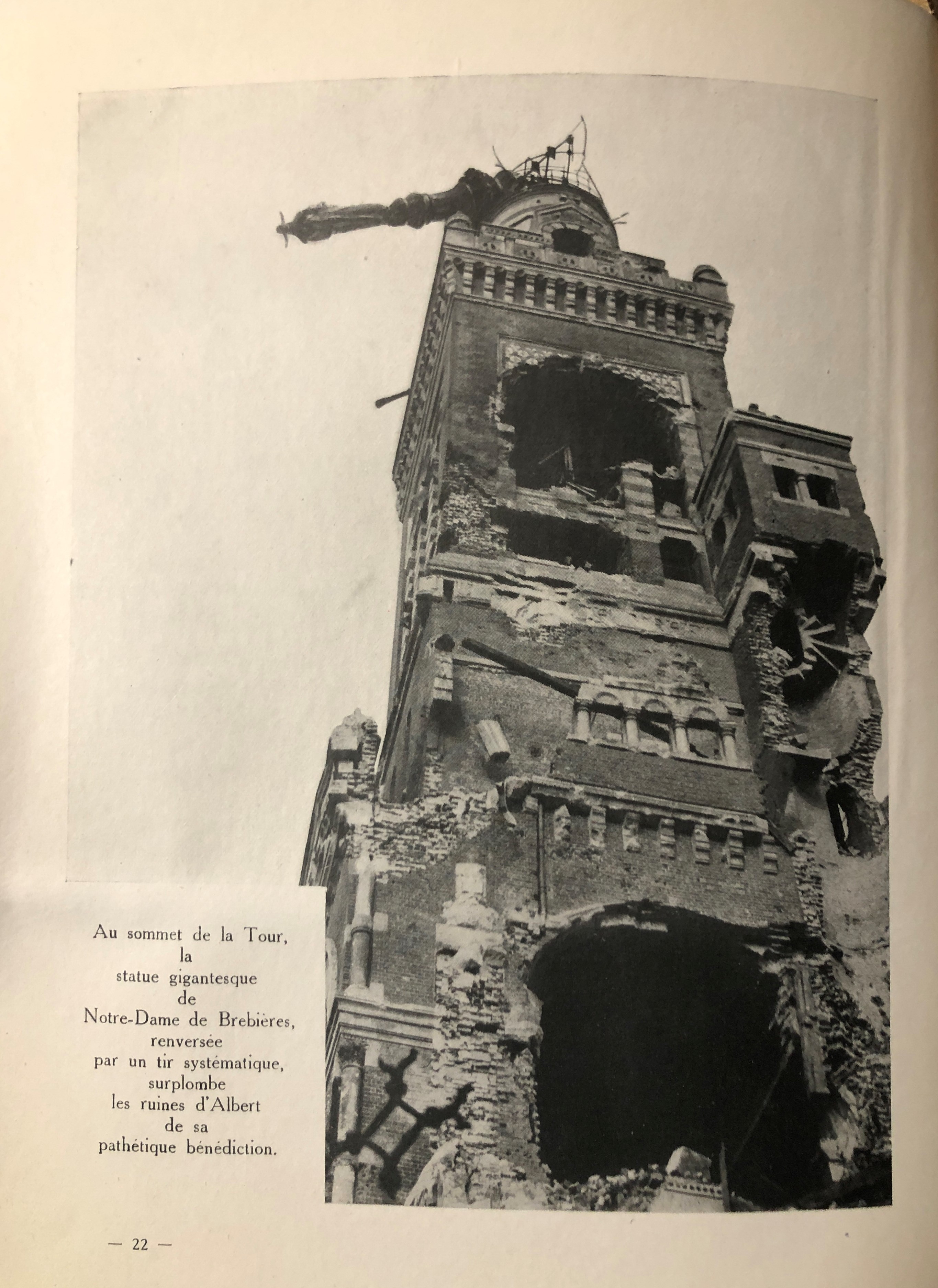Blogs

Our Lady of the Trenches: Mary in World War I
By Henry Handley
Just over a century ago, the Battle of the Somme began on July 1, 1916, a deadly, prolonged battle that formed only part of the individual and collective trauma of World War I. In the midst of destruction, grief, and powerlessness, people found Mary as a creative symbol and a protector during and after the war.
A 1917 pamphlet from Ancona, a city on the Italian front, pleads for Mary’s protection “on the occasion of public calamity,” for the people of the city and for the people of Italy.
Music also found connections to Mary — and not just sacred music. Sheet music for “A Soldier’s Rosary,” a sentimental Tin Pan Alley ballad, celebrates mothers on the American homefront. In a more traditional vein, a French pamphlet printed circa 1914 shares wartime hymns to Our Lady of Lourdes and Joan of Arc.
Perhaps most strikingly, La Lourdes du Nord: Notre-Dame de Brebières, a monograph on a French church’s history and architecture, documents a Marian statue that became a symbol of the war, especially for the soldiers who saw it on the front lines of the Battle of the Somme. A statue of the Virgin and Child atop a tower of Notre-Dame des Brebières, a basilica in Albert, France, was nearly toppled when the basilica was bombed in 1915. The so-called Leaning Virgin remained precariously attached to its base on the basilica’s tower until April 1918, prompting legends and superstitions around which side would topple the statue and thus win or lose the war, depending on whom you asked. The statue was destroyed in 1918 along with what was left of the church.
The statue was never replaced, and the myth-making spanned decades: As Paul Fussell notes in The Great War and Modern Memory, poems and novels continued to reference the statue for years after the war. Writers, many beyond the Catholic Church, described the Leaning Virgin as a symbol of both hope and disillusionment. By 1957, the statue was still a powerful enough symbol that Henry Williamson titled his World War I novel The Golden Virgin, even though the statue appears only fleetingly.
The Leon Clugnet Collection, one of the earlier major acquisitions for the Marian Library, contains numerous materials on European Marian devotion, so naturally, the collection also documents many sites that were damaged or destroyed during the two world wars. Although the Clugnet materials are relatively recent for a library whose holdings reach back to the 15th century, many, like this collection of sermons preached at Notre-Dame de Brebières, are extremely rare, making them even more poignant.
Further reading
Fussell, Paul. The Great War and Modern Memory. Available as an ebook (requires UD login) and as a physical copy in Roesch Library.
From the Marian Library’s collections, and available with an appointment (email marianlibrary@udayton.edu):
- Alla regina di tutti i Santi Maria, Ancona fidente: 16-17-18 Novembre 1917. Ancona: Prem. Tipografia Marcucci, c. 1917.
- Brissy, René Alphonse. La Lourdes du Nord: Notre-Dame de Brebières. Paris: Bloud & Gay, 1915.
- Burke, Joseph A., and James E. Dempsey. “A Soldier's Rosary.” New York: A.J. Stasny Music Co., c. 1918.
- Le messager de Notre-Dame de Brebières. Albert?]: N.D. de Brebières, c. 1901.
- Ricard, Louis. Notre-Dame des Tranchées: origine opportunité de vocable pratique de la dévotion. Toulouse: Impr. Saint-Cyprien, c. 1915.
- Vézère, Jean. Cantiques pour le temps de la guerre. Likely published in Limoges by P. Dumont, c. 1914.
— Henry Handley is a collections librarian in the Marian Library. Special collections cataloger Joan Milligan also contributed research to this blog.



